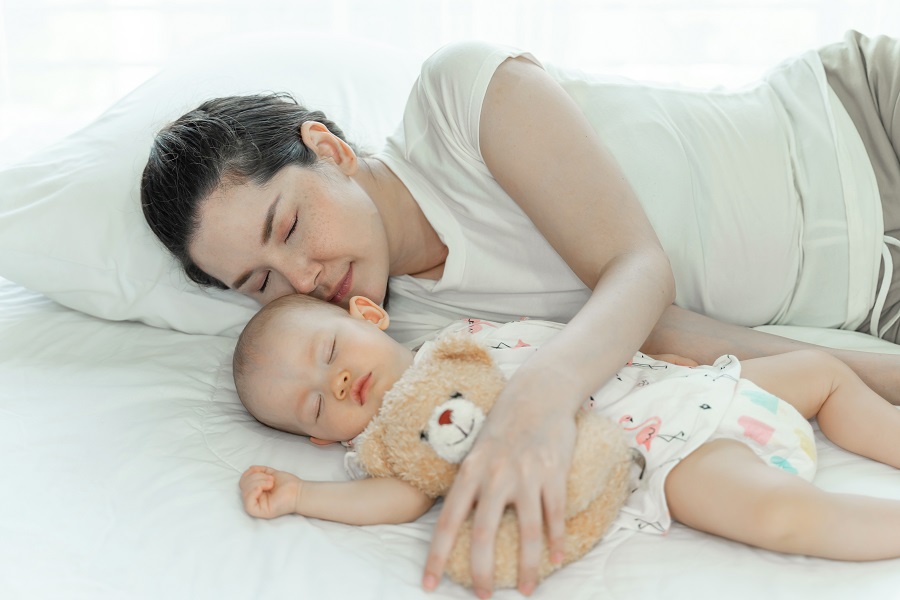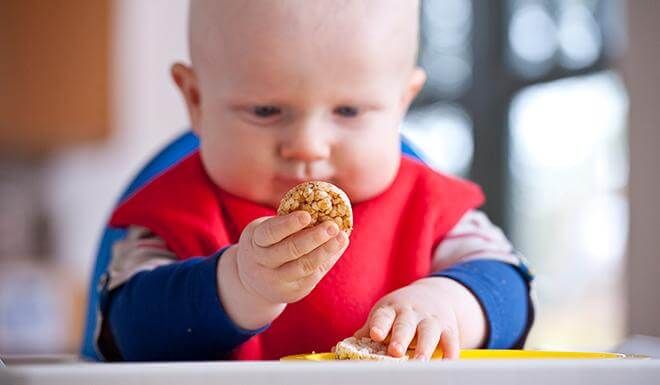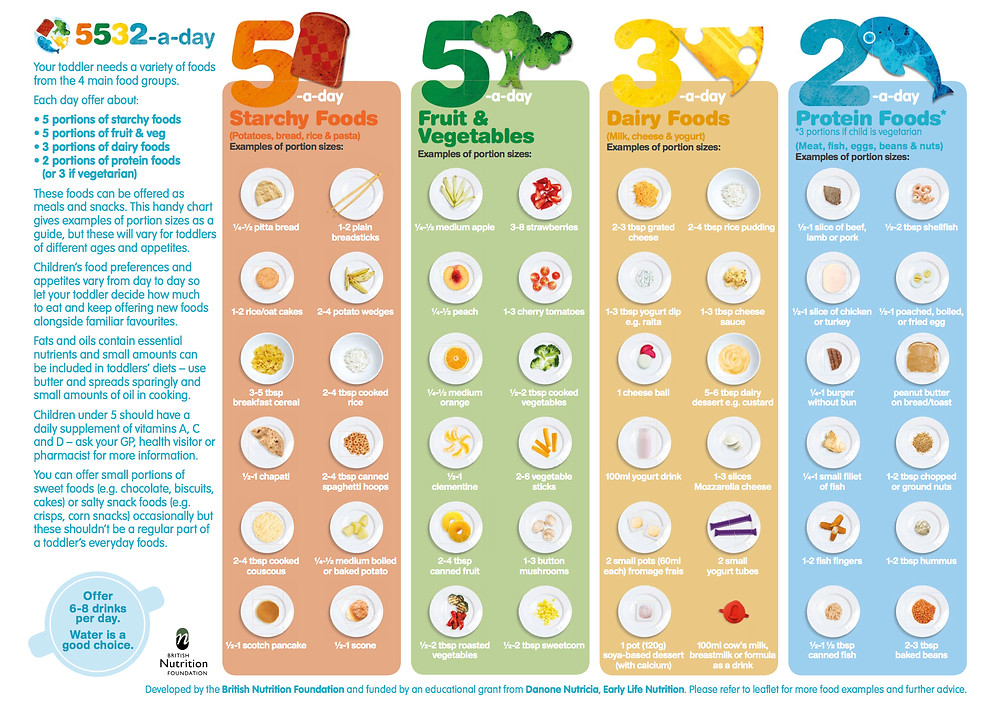Horse meat in baby food
| | |||||||||||
| |||||||||||
| Resources Art, Cuisine, Famous Italians, Festivals, Folklore, Genealogy, Holidays, Hotels, Photos, Real Estate, Sports, Travel and More Guides Surname Collection Add your name to the collection. Recipes Authentic Italian recipes for you to enjoy. Photo Galleries Enjoy photos of Italy, wine making & more. Proverbi Proverbs in Italian & English. Our Paesani Weekly column dedicated to today's Italy. by Francesca Di Meglio Italian Memories Articles on growing up Italian. by Cookie Curci Una Mamma Italiana Articles for Italian mammas. by Tiffany Longo Learn Italian English-Italian guides Spanish-Italian guides. Molto Italiano Sign up for our FREE newsletter. Trivia Test your knowledge of Italy. | Discover the foods that have the littlest set oohing and aahing, literally Our Paesani By Francesca Di Meglio Italian babies have to be the best fed in the world. I'm not sure how healthy the food is but it sure is tasty – and it usually sets baby up for a healthy, not to mention somewhat gourmet (at least by American standards) palette for life. Of course, Italian mothers, who are among the world's hardest working women, also rely on jarred baby food. While there are a couple of brands on the market, Plasmon is the Gerber of Italy. I haven't done any formal research, but when I traveled with my then 6-month-old son to Ischia in Italy, everyone told me this was the stuff I had to buy. So, I did. Among Plasmon's offerings, you'll find some interesting flavors. Of course, the standard baby biscuits, mashed up peas and rice, and pureed meat are on the menu. But you'll also find the following:
In the United States, babies are often introduced to food with a bit of oatmeal, mushy and easy to digest. Italian babies would never eat oatmeal. (In fact, Italian immigrants to the United States often recall social workers trying to force feed the stuff to their children and called it "pig's food.") Instead, babies in Italy first sample pastina. You're supposed to wait until your doctor gives you the go ahead around four months, but most of the moms I know in Italy start giving their baby pastina at two months. I didn't follow Nonna's orders on this one. When we got to Italy and my son was six months old, I served him his first bowl of pastina. Once baby is down with the pastina, you start adding to it. Eggs are another staple for babies in Italy. It's rather a big deal, the first time baby eats a soft-boiled egg. Now, I let my relatives convince me to give my son this when he was about seven months old, but I'm not sure it was so wise. My brother, who is in the restaurant business, is still critical of the decision. What Italian parents do is get a fresh-from-the-chicken egg, boil water, and place the egg in the boiling water for a couple of seconds. For me, an American, they left it there for a whole minute. Then, you carefully break open the very tip of the shell and use a tiny spoon to get out the still basically raw yolk to feed to baby. The problem, of course, is the chance of salmonella and baby's vulnerable immune system. I'll be honest with you, my son experienced 40 days of diarrhea during this period of time in Italy. I don't blame the egg because it seemed to be the change of water from the United States to Italy and the travel. But I wouldn't advise soft-boiled eggs to babies no matter what the gourmands in Italy say. I felt pressure to do as the Romans. You, on the other hand, should do what makes you comfortable with your bambino. To be perfectly honest, my son still loves eggs, and he prefers to eat them poached or fried with runny, runny yolks. He will not, however, put pasta even remotely close to his mouth. He was given breast milk and plain pastina in the wake of his diarrhea. I don't know if he associates the pastina with his illness, but he will spit pasta in your face if you give it to him. It hasn't stopped all the nonni from trying. Di Meglio uses the written word to help families create memories and stick together. You can follow her on Facebook at Francesca's Newlyweds Nest and on Twitter @ItalianMamma10. |
Buy Now American Grown Partner Links Shops/Stores Italiansrus Gear Proudly display the colors of Italy with these great products. 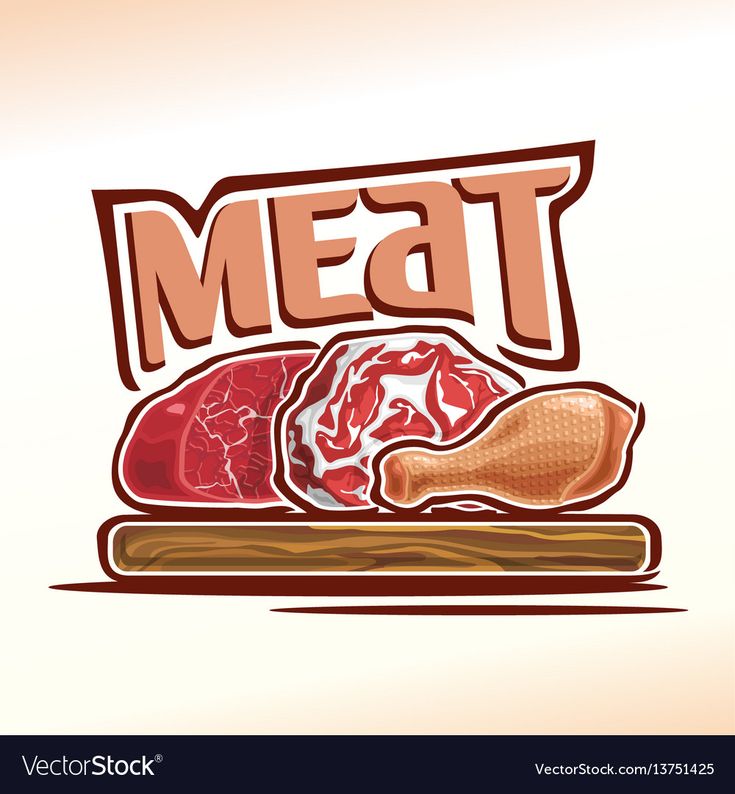 The world largest online retailer for Premium Italian Fashions. Travel Booking.com | |||||||||
Horse-meat company makes emergency food for babies, pets
The Asahi Shimbun
>
National Report
>
article
By HIROMI SEKI/ Staff Writer
November 17, 2019 at 07:00 JST
Akihiko Yasui holds a bag of Sonae and his pet dog, Sakura, in Habikino, Osaka Prefecture. (Hiromi Seki)
HABIKINO, Osaka Prefecture--The owner of a horse-meat processing company whose business was damaged in a typhoon has created an allergy-free emergency food product for babies and pets during disasters.
The newly developed risotto-like “Sonae” (preparedness) has a mild taste, said Akihiko Yasui, 42.
When Typhoon No. 21 pounded the Kinki region in September last year, roof tiles were blown off Yasui Shoten, Yasui’s horse-meat processing and sales shop. Violent gusts also smashed windows and damaged the veranda.
Yasui’s nearby house was spared, and he, his wife, their two children and their dog, Sakura, were not injured.
But Yasui felt uneasy when he thought about how his family would have fared if the house was damaged and they were forced to live in an evacuation center. He wondered how he could protect his family and pet.
An idea popped into his head in January when he was watching “Manpuku,” a serial drama on Japan Broadcasting Corp. (NHK) about a man who invented instant ramen with a long shelf life.
Yasui decided to develop an emergency food product edible for people and pets.
In March, he attended a lecture for the Level 3 course for the qualification in pet disaster management, which is offered by a private entity.
Drawing on advice from a veterinarian whom he met during the lecture, Yasui devised ways to increase the moisture in emergency food to help disaster survivors get through several days without water or other liquids.
The main ingredient in Sonae is his company’s fresh horse meat, which contains an abundance of protein and other nutrients while having a relatively low risk of causing allergic reactions.
Yasui used brown rice for the product out of consideration to consumers with wheat allergies.
He also mixed in 12 ingredients, including cabbage and sweet potato, after consulting with a dietitian.
The result was an emergency food product that is additive-free and nutritionally balanced.
The product will come in handy if distribution networks stop functioning in a disaster, he said.
“Families with pets, children with allergic tendencies and their families are more vulnerable to disasters,” Yasui said. “With this (Sonae), even households with babies, dogs or cats can make it through for a while. I hope people are prepared with Sonae and evacuate lightly and quickly when the worst occurs.”
I hope people are prepared with Sonae and evacuate lightly and quickly when the worst occurs.”
Sonae can be stored for up to about a year. It can be fed as it is to infants, dogs and cats, Yasui said. Adults can add salt for flavor.
A single bag of Sonae weighing about 250 grams is available for 800 yen ($7.40), excluding tax, at both Yasui Shoten and online (https://saiboshi.net/).
Meat. Horse meat for baby food. Technical conditions-RTS-Tenser
GOST R 55335-2012
OKS 67.120.10
Date of introduction 2014-01-01
1 developed by the State Scientific Institution of the All-Russian Research Institute of Meat Industry named after .M.Gorbatov of the Russian Academy of Agricultural Sciences (GNU VNIIMP named after V.M.Gorbatov of the Russian Agricultural Academy)
2 INTRODUCED by the Technical Committee for Standardization TK 226 "Meat and Meat Products"
3 APPROVED AND PUT INTO EFFECT by the Order of the Federal Agency for Technical Regulation and Metrology dated November 29, 2012 N 1657-st
4 INTRODUCED FOR THE FIRST TIME
5 REPUBLICATION. November 2019
November 2019
The rules for the application of this standard are established in article 26 of the Federal Law of June 29, 2015 N 162-FZ "On standardization in the Russian Federation" . Information about changes to this standard is published in the annual (as of January 1 of the current year) information index "National Standards", and the official text of changes and amendments - in the monthly information index "National Standards". In case of revision (replacement) or cancellation of this standard, a corresponding notice will be published in the next issue of the monthly information index "National Standards". Relevant information, notification and texts are also posted in the public information system - on the official website of the Federal Agency for Technical Regulation and Metrology on the Internet (www.gost.ru)
This standard applies to horse meat in half carcasses and quarters (hereinafter - horse meat) intended for the industrial production of food products for children over 6 months old.
Safety and quality requirements are set out in section 5, for labeling - in section 6.
This standard uses normative references to the following standards:
GOST R 50454 (ISO 3811-79) Meat and meat products. Detection and counting of putative coliform bacteria and Escherichia coli (arbitrage method)
GOST R 50455 (ISO 3565-75) Meat and meat products. Salmonella detection (arbitration method)
GOST R 51301 Food products and food raw materials. Stripping voltammetric methods for determining the content of toxic elements (cadmium, lead, copper and zinc)
________________
GOST 33824-2016 is in force.
GOST R 51447 (ISO 3100-1-91) Meat and meat products. Sampling methods
GOST R 51448 (ISO 3100-2-88) Meat and meat products. Sample preparation methods for microbiological studies
GOST R 51766 Food raw materials and products.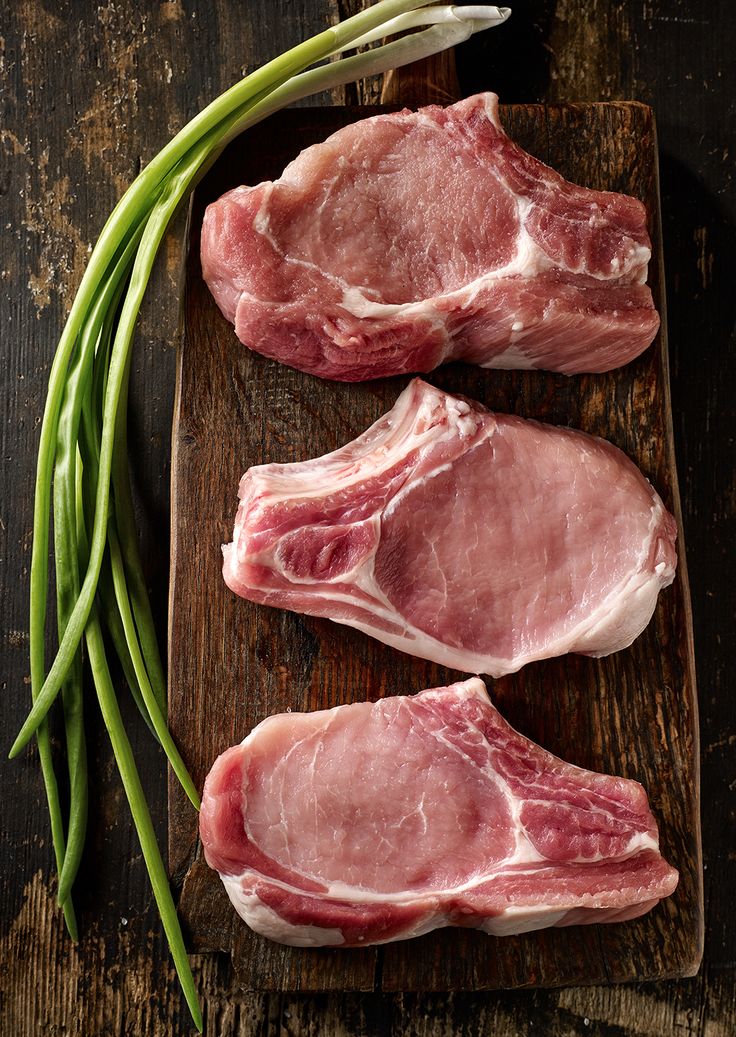 Atomic absorption method for the determination of arsenic
Atomic absorption method for the determination of arsenic
GOST R 51921 Food products. Methods for detection and determination of bacteria Listeria monocytogenes
________________
GOST 32031-2012 is in force.
GOST R 52427 Meat industry. Food products. Terms and definitions
GOST R 54015 Food products. Sampling method for the determination of strontium Sr-90 and cesium Cs-137
________________
GOST 32164-2013 is valid.
GOST R 54016 Food products. Method for determination of cesium content Cs-137
________________
GOST 32161-2013 is valid.
GOST R 54017 Food products. Method for determining the content of strontium Sr-90
________________
GOST 32163-2013 is valid.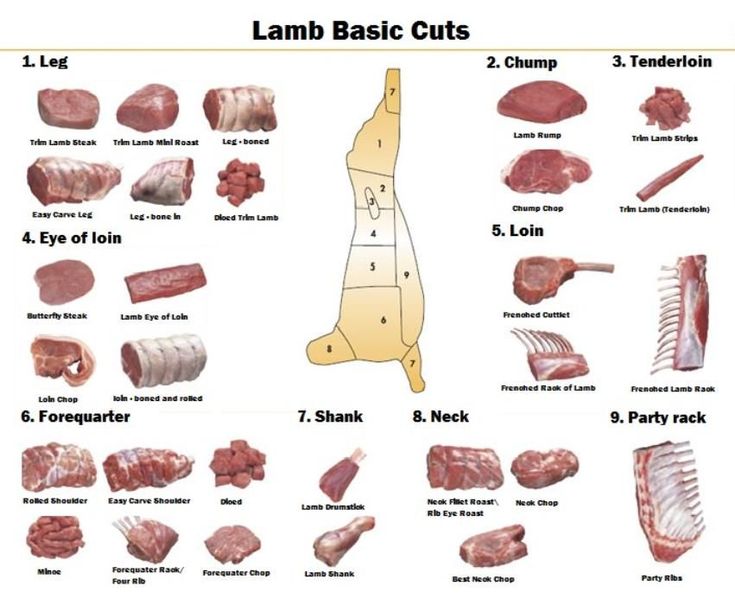
GOST 7269 Meat. Sampling methods and organoleptic methods for determining freshness
GOST 9794 Meat products. Methods for determination of total phosphorus content
GOST 10354 Polyethylene film. Specifications
GOST 10444.15 Food products. Methods for determining the amount of mesophilic aerobic and facultative anaerobic microorganisms
GOST 14192 Cargo marking
GOST 15846 Products shipped to the Far North and equivalent areas. Packing, marking, transportation and storage
GOST 19496 Meat and meat products. Histological examination method
GOST 21237 Meat. Methods of bacteriological analysis
GOST 23392 Meat. Methods for chemical and microscopic analysis of freshness
GOST 26669 Food and flavor products. Preparation of samples for microbiological analysis
GOST 26670 Food products. Methods for cultivation of microorganisms
Methods for cultivation of microorganisms
GOST 26927 Food raw materials and products. Methods for determination of mercury
GOST 26929 Food raw materials and products. Sample preparation. Mineralization to determine the content of toxic elements
GOST 26930 Food raw materials and products. Method for determination of arsenic
GOST 26932 Food raw materials and products. Lead determination methods
GOST 26933 Food raw materials and products. Methods for determination of cadmium
GOST 30178 Food raw materials and products. Atomic absorption method for determination of toxic elements
GOST 30538 Food products. Method for determination of toxic elements by atomic emission method
GOST 31628 Food products and food raw materials. Stripping voltammetric method for determining the mass concentration of arsenic
GOST 31659 (ISO 6579:2002) Food products.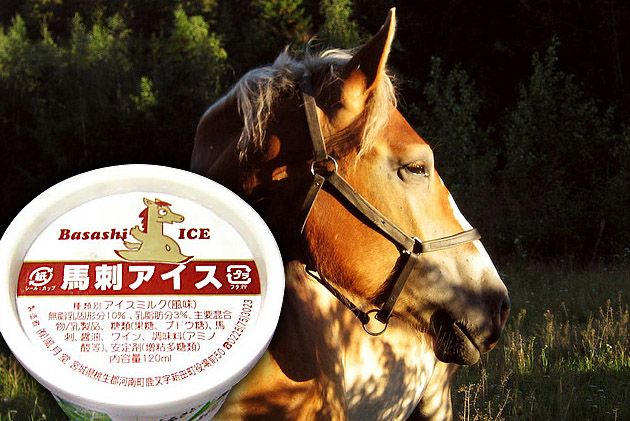 Method for detection of bacteria of the genus Salmonella
Method for detection of bacteria of the genus Salmonella
GOST 31671 (EN 13805:2002) Food products. Definition of trace elements. Preparation of samples by the mineralization method at elevated pressure
GOST 31747 (ISO 4831:2006, ISO 4832:2006) Food products. Methods for detection and quantification of coliform bacteria (coliform bacteria)
GOST R ISO 13493 Meat and meat products. Method for determining the content of chloramphenicol (levomycetin) using liquid chromatography
GOST ISO 7218 Microbiology of food and animal feed. General requirements and recommendations for microbiological research
Note - When using this standard, it is advisable to check the validity of reference standards in the public information system - on the official website of the Federal Agency for Technical Regulation and Metrology on the Internet or according to the annual information index "National Standards", which published as of January 1 of the current year, and according to the issues of the monthly information index "National Standards" for the current year.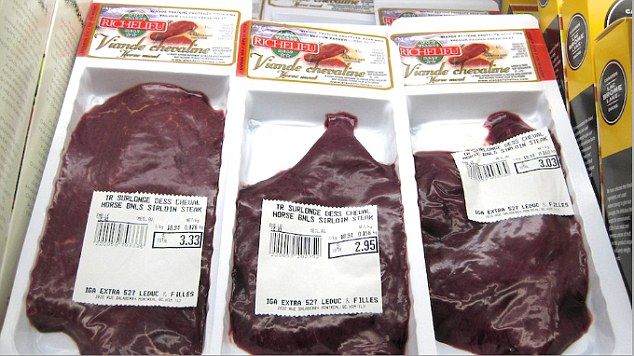 If an undated referenced reference standard has been replaced, it is recommended that the current version of that standard be used, taking into account any changes made to that version. If the reference standard to which the dated reference is given is replaced, then it is recommended to use the version of this standard with the year of approval (acceptance) indicated above. If, after the approval of this standard, a change is made to the referenced standard to which a dated reference is given, affecting the provision to which the reference is given, then this provision is recommended to be applied without taking into account this change. If the reference standard is canceled without replacement, then the provision in which the reference to it is given is recommended to be applied in the part that does not affect this reference.
If an undated referenced reference standard has been replaced, it is recommended that the current version of that standard be used, taking into account any changes made to that version. If the reference standard to which the dated reference is given is replaced, then it is recommended to use the version of this standard with the year of approval (acceptance) indicated above. If, after the approval of this standard, a change is made to the referenced standard to which a dated reference is given, affecting the provision to which the reference is given, then this provision is recommended to be applied without taking into account this change. If the reference standard is canceled without replacement, then the provision in which the reference to it is given is recommended to be applied in the part that does not affect this reference.
This standard uses the terms according to GOST R 52427.
4.1 Depending on the fatness of the carcasses, horse meat is divided into categories according to 5. 2.1.
2.1.
4.2 According to the thermal state, horse meat is subdivided into:
- chilled - with a temperature of minus 1°C to 4°C at any measurement point;
- frostbitten - with temperature from minus 2°С to minus 3°С at any measurement point;
- frozen - with a temperature above minus 18°C at any point of measurement.
5.1 Horse meat must comply with the requirements of this standard, produced according to the manufacturer's technological instructions in compliance with the requirements established in [1]-[4].
5.2 Characteristics
5.2.1 Konin, depending on freshenation, are divided into categories in accordance with the requirements specified in table 1.
Table 1
| First | Full-meat carcasses with well-developed muscles in the shoulder blades and thighs. |
| Second | The muscles are developed satisfactorily, the bones of the skeleton may protrude slightly. Subcutaneous fat deposits are insignificant. On the inside of the abdominal wall there is a thin layer of fat deposits with significant gaps |
5.2.2 Horse meat is produced in the form of half carcasses or quarters. Carcasses must be divided into half carcasses along the vertebral column, without leaving whole vertebrae in any half carcass and without crushing them, the spinal cord must be removed. The division of half carcasses into quarters should be made along the trailing edge of the 18th rib.
5.2.3 According to the organoleptic characteristics, the meat must be fresh, without foreign smell.
Sides and quarters pink with a reddish tinge to cherry red; fat is white or yellowish.
Half carcasses and quarters must not contain remnants of internal organs, skins, blood clots, fringes of muscle and fat tissue, dirt, bruises and bruises.
It is allowed to have strips from bruises and bruises, breakdowns of subcutaneous fat and muscle tissue in an area not exceeding 15% of the surface of a half carcass or quarter.
Horse meat must not be frozen more than once.
Ice and snow are not allowed on frozen and frozen horse meat.
5.2.4 In terms of safety, horse meat must comply with the requirements established in [1], [4], [22].
5.2.5 According to microbiological indicators, the content of toxic elements, antibiotics, pesticides, dioxins, radionuclides, horsemeat must meet the requirements of permissible levels established in [4], [22].
5.2.6 The mass fraction of naturally occurring total phosphorus in horse meat must not exceed 0.5% in terms of .
5.3 Requirements for raw materials
For the production of horse meat, young horses from 1 to 3 years old are used, fattened without the use of growth stimulants, hormonal drugs, antibiotics, antimicrobials, synthetic nitrogen-containing substances, products of microbial synthesis, feed containing GMOs, grown in compliance with special veterinary, zootechnical and zoohygienic requirements in farms that are prosperous in epizootic terms.
6.1 Veterinary branding and commodity marking of horse meat is carried out in accordance with [5]-[7].
6.2 Each side and quarter must be affixed with an oval-shaped veterinary stamp confirming that the veterinary and sanitary examination of half-carcasses and quarters has been carried out, the product is safe in veterinary and sanitary terms and is allowed for use for food purposes without restrictions.
6.3 Commodity marking of half carcasses and quarters is carried out only if there is a stamp of the state veterinary service.
The horse meat category is indicated by:
- the first - with a round stamp with a diameter of 40 mm with the designation of the letter "M" inside the stamp with a height of 20 mm;
- the second one - with a square stamp with a side size of 40 mm with the designation of the letter "M" inside the stamp, 20 mm high.
Each half-carcass of horse meat is marked with two stamps, one on the thigh and shoulder parts. To the right of the stamp, a rectangular stamp "Horse meat" with a side size of 25x50 mm and a stamp with the letter "D" (baby food) 20 mm high are placed.
6.4 Transport marking of packaged half carcasses and quarters - in accordance with GOST 14192 with handling signs: "Perishable goods", "Temperature limitation", with an additional indication: "It is not allowed to increase the storage temperature, defrosting and re-freezing".
6.5 Marking of horse meat shipped to the regions of the Far North and areas equated to them - according to GOST 15846.
7.1 Horse meat is produced in a package. Horsemeat is packed in a stitched packing fabric or in bags made of materials approved for use in the food industry, or in polyethylene film according to GOST 10354, or in bags from it.
7.2 All materials used for packaging must be approved for use in the food industry [8] and ensure the safety and presentation of horse meat during transportation and storage during the entire shelf life.
7.3 Packing of horsemeat shipped to the regions of the Far North and areas equated to it - in accordance with GOST 15846.
8.1 Acceptance of horsemeat is carried out in batches. A lot is understood as any quantity of horse meat, uniform in quality, of one type of heat treatment, presented for simultaneous delivery and acceptance, accompanied by one accompanying veterinary document.
8.1.1 Acceptance of horse meat is carried out according to the indicators and requirements established by this standard. Upon acceptance, each half carcass and/or quarter is inspected.
8.1.2 To assess the quality of horse meat, a sample is taken from different places of the lot in the amount of 3% of its total quantity.
8.1.3 Upon acceptance, the temperature of half carcasses and quarters is determined in each batch of horse meat.
8.1.4 The order and frequency of control of microbiological indicators, the content of toxic elements (mercury, lead, arsenic, cadmium), antibiotics, pesticides, dioxins, radionuclides is established by the product manufacturer in the production control program.
_______________
Control over the content of dioxins in horse meat is carried out in cases of deterioration of the ecological situation associated with accidents, man-made and natural disasters leading to the formation and release of dioxins into the environment; in cases of a reasonable assumption about their possible presence in food raw materials.
8.1.5 Upon acceptance, in each batch of horse meat, the temperature in the thickness of the muscles of half carcasses and quarters is determined.
8.1.6 If unsatisfactory results are obtained, repeat tests on a double sample of samples from the same lot.
The results of the repeated tests are extended to the entire lot.
8.1.7 In case of repeated negative test results for at least one quality indicator, a batch of horsemeat is not subject to acceptance.
Test results are documented.
9.1 The belonging of horse meat to a certain category of fatness is determined in accordance with 5.2.1.
9.2 Determination of mass
9.2.1 The mass of horse meat is determined by weighing each side or quarter separately.
9.2.2 The actual weight of half-carcasses and quarters is determined by weighing on a monorail scale with the highest and lowest weighing limits from 2000 kg to 10 kg depending on the weight and with the value of the verification interval in accordance with the required measurement accuracy.
9.3 Temperature measurement
The temperature of horse meat is determined in the thickness of the muscles at a depth of at least 1 cm with a digital thermometer with a measurement range from minus 30°C to 120°C with a division value of 0.1°C or other devices that provide temperature measurement within the specified range permitted for food contact.
9.4 Sampling and preparation of samples for testing - according to GOST ISO 7218, GOST R 51447, GOST R 51448, GOST R 54015, GOST 7269, GOST 26669, GOST 26670, GOST 26929, GOST 31671, [9].
9.5 Determination of organoleptic indicators - according to GOST 7269.
9.6 In case of disagreement in determining the freshness of meat, sampling and testing - according to GOST 7269, GOST 19496, GOST 23392.
9.7 Determination of microbiological indicators - according to GOST R 50454, GOST R 50455, GOST R 51921, GOST 10444. 15, GOST 21237, GOST 31659, GOST 31747, [10] and [11].
15, GOST 21237, GOST 31659, GOST 31747, [10] and [11].
9.8 Determination of the content of toxic elements:
- mercury - according to GOST 26927, [12];
- arsenic - according to GOST R 51766, GOST 26930, GOST 30538, GOST 31628;
- lead - according to GOST R 51301, GOST 26932, GOST 30178, GOST 30538, [13], [14];
- cadmium - according to GOST R 51301, GOST 26933, GOST 30178, GOST 30538, [13], [14].
9.9 Determination of pesticides - according to [15]-[17].
9.10 Determination of antibiotics - according to GOST R ISO 13493, [18]-[20].
9.11 Determination of radionuclides - in accordance with GOST R 54016, GOST R 54017.
9.12 Determination of the mass fraction of total phosphorus - in accordance with GOST 9794, followed by recalculation of the determination result to . The conversion factor for is equal to 2. 29.
29.
9.13 Determination of dioxins according to [21].
9.14 It is allowed to use other certified control methods with metrological characteristics not lower than the characteristics of the methods specified in this section.
10.1 Horse meat is stored under the following temperature, humidity conditions and conditions:
- chilled - at air temperature from minus 1°С to plus 4°С inclusive and relative air humidity from 85% to 90%, in a suspended state;
- frozen - at air temperature from minus 3°С to minus 2°С inclusive and relative air humidity from 85% to 90%, suspended or stacked;
- frozen - at air temperature not higher than minus 18°C and relative air humidity from 95% to 98%, stacked.
10.2 Horse meat is transported in refrigerated vehicles in accordance with the rules for the transportation of perishable goods in force for this type of transport, with a temperature at any point of measurement:
- chilled from minus 1°С to plus 4°С;
- frozen from minus 3°С to minus 2°С;
- frozen not higher than minus 18°С.
10.3 Transportation and storage of horse meat sent to the Far North and equivalent areas - in accordance with GOST 15846.
10.4 The temperature of horse meat at any measurement point handed over to the consignee must not exceed: for chilled - plus 4°С, for frozen - minus 2°С, for frozen - minus 18°С.
10.5 The recommended shellness periods from the moment of slaughter are given in table 2.
Table 2
| Thermal state of the conical | Parameters of air83 in agreement with the Main Sanitary and Epidemiological Directorate of the USSR Ministry of Health. Amendments and additions were made on June 17, 1988 by the Main Directorate of Veterinary Medicine of the USSR State Agroindustrial Industry in agreement with the Chief Sanitary and Epidemiological Directorate of the Ministry of Health of the USSR Approved by the Ministry of Meat and Dairy Industry of the USSR and the Deputy Chief State Sanitary Doctor of the USSR in 1985 in agreement with the Main Directorate of Veterinary Medicine of the Ministry of Agriculture of the USSR | ||||||
| [3] | Sanitary and hygienic requirements for the production of meat-based products for feeding young children. | ||||||
| [4] | 9December 2011 N 880 | ||||||
| [5] | TR TS 022/2011 | Technical regulations of the Customs Union "Foods in terms of its labeling", approved by the decision of the Customs Customs Commission of December 9, 2011 | |||||
| 0003 | |||||||
| [7] | Instructions for veterinary braiding of meat, approved by the Ministry of Agriculture of Russia April 28, 1994 | ||||||
| [8] | ) Technical regulation of the Customs Union "On the safety of packaging", approved by the Decision of the Commission of the Customs Union on August 16, 2011 N 881 * | ||||||
| ________________ * Probably an original error. | |||||||
| [9] | MUK 4.1.985-2000 | Determination of the content of toxic elements in food products and food raw materials. Method of autoclave sample preparation | |||||
| [10] | MUK 4.2.1122-2002 | ||||||
| [13] | MU 01-19/47-11-92 | Methodological instructions on atomic-abrasion elements in food products | 9 | MUK 4. | Method for measuring the mass fraction of lead and cadmium in food products and food raw materials by electrothermal atomic absorption spectrometry | ||
| [15] | MU 2142-80 | Methodological guidelines for the determination of chlorological pesticides in water, food and tobacco products 903 ] | MU 1222-75 | Determination of organochlorine pesticides in meat, products and animal fats by thin layer chromatography | |||
| [17] | Determination of trace amounts of pesticides in food, feed and environment. Methods for determining microquantities of pesticides in food, feed and environment: Handbook / Ed. | ||||||
| [18] | MUK 4.2.026-95 | Express method for determining antibiotics in food products | |||||
| Determination of the residual amounts of levomicetin (chlomfenicol, chlormeeciatine) in animal products by highly effective liquid chromatography and immunofortment analysis | |||||||
| [20] 6 [20] 6 [20] 6 [20] 6 [20] 6 [20] | Guidelines for the determination of antibiotic residues in animal products | ||||||
| [21] | MUK of the Ministry of Health of the Russian Federation dated 06/01/99 | Guidelines for the identification and isomer-specific determination of polychlorinated dibenzo-p-dioxins and dibenzofurans in meat, poultry, fish, products and feed by chromato-mass spectrometry | |||||
| [22] | Uniform sanitary and epidemiological and hygienic requirements for goods subject to sanitary and epidemiological supervision (control), approved by the decision of the Commission of the Customs Union of May 28, 2010 N 2 | ||||||
Complementary meat in the nutrition of infants | #04/09
Meat is an important component of baby food, as it is a source of protein and essential amino acids that a child needs for normal growth and development.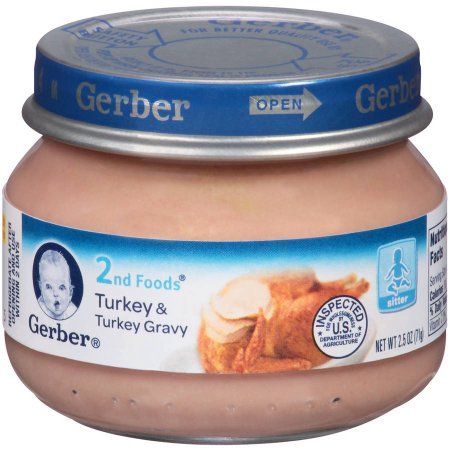 Also an important characteristic of this product is the presence in it of a sufficient level of heme iron, which is characterized by a high degree of bioavailability. This is especially true for children in the second half of life, since by this period the iron reserve is depleted. In this regard, obtaining iron with food (complementary foods) becomes extremely necessary [1, 2]. Separately, the role of meat complementary foods as a source of zinc, a mineral substance that performs a number of important functions in the body, should be emphasized. Insufficient intake of this mineral adversely affects the processes of growth and development, is accompanied by a violation of immunological reactivity, etc. It is known that by 4-6 months of age, children who are, for example, exclusively breastfed, become vulnerable to deficiency of not only iron, but also zinc [3]. In addition, meat contains a number of other minerals - salts of phosphorus, potassium, magnesium, as well as B vitamins - B12, B1, B2, B6.
Also an important characteristic of this product is the presence in it of a sufficient level of heme iron, which is characterized by a high degree of bioavailability. This is especially true for children in the second half of life, since by this period the iron reserve is depleted. In this regard, obtaining iron with food (complementary foods) becomes extremely necessary [1, 2]. Separately, the role of meat complementary foods as a source of zinc, a mineral substance that performs a number of important functions in the body, should be emphasized. Insufficient intake of this mineral adversely affects the processes of growth and development, is accompanied by a violation of immunological reactivity, etc. It is known that by 4-6 months of age, children who are, for example, exclusively breastfed, become vulnerable to deficiency of not only iron, but also zinc [3]. In addition, meat contains a number of other minerals - salts of phosphorus, potassium, magnesium, as well as B vitamins - B12, B1, B2, B6.
According to the latest changes to optimize the nutrition of children of the first year of life, reflected in the draft National Program, meat complementary foods are recommended for children of the first year of life no later than 6 months of life. At the same time, meat puree is a dish introduced into the child's diet after grain complementary foods (porridge) and vegetable puree. At the same time, it should be noted that in a number of foreign studies, meat complementary foods are preferred as the first product. This is mainly due to the high bioavailability of iron and zinc from this product. According to these studies, the assimilation of zinc and iron from a meat product and the subsequent physical development of children who received meat puree as the first complementary food is much better in comparison with children who traditionally received commercially produced cereals (fortified with zinc and iron) [4, 5] .
In the nutrition of infants, it is advisable to use canned meat of industrial production, for the preparation of which meat of the highest grades (beef, horse meat, pork, poultry), as well as offal, is used.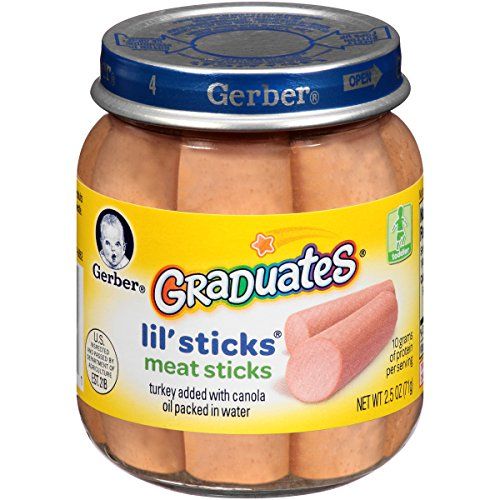 It should be noted that mashed potatoes from beef, pork, chicken, turkey, etc. can be recommended from 6 months, mashed potatoes with the inclusion of offal - from 8 months [6]. At the same time, the recommended amount of meat puree gradually increases from 30 g to 50 g - by 8 months and up to 60–70 g per day - by 9 months.months
It should be noted that mashed potatoes from beef, pork, chicken, turkey, etc. can be recommended from 6 months, mashed potatoes with the inclusion of offal - from 8 months [6]. At the same time, the recommended amount of meat puree gradually increases from 30 g to 50 g - by 8 months and up to 60–70 g per day - by 9 months.months
According to the modern classification in force in Russia, complementary foods that are a source of meat are divided into groups:
-
meat based;
-
plant-based with the addition of meat;
-
meat based.
The composition of canned food “vegetable-based with meat” and “meat-and-vegetable based”, in addition to meat, includes various vegetables (zucchini, potatoes, pumpkin, cauliflower, broccoli, etc.), cereals (rice, oatmeal, buckwheat, semolina groats). This improves the taste of the product and allows you to diversify the diet of the child.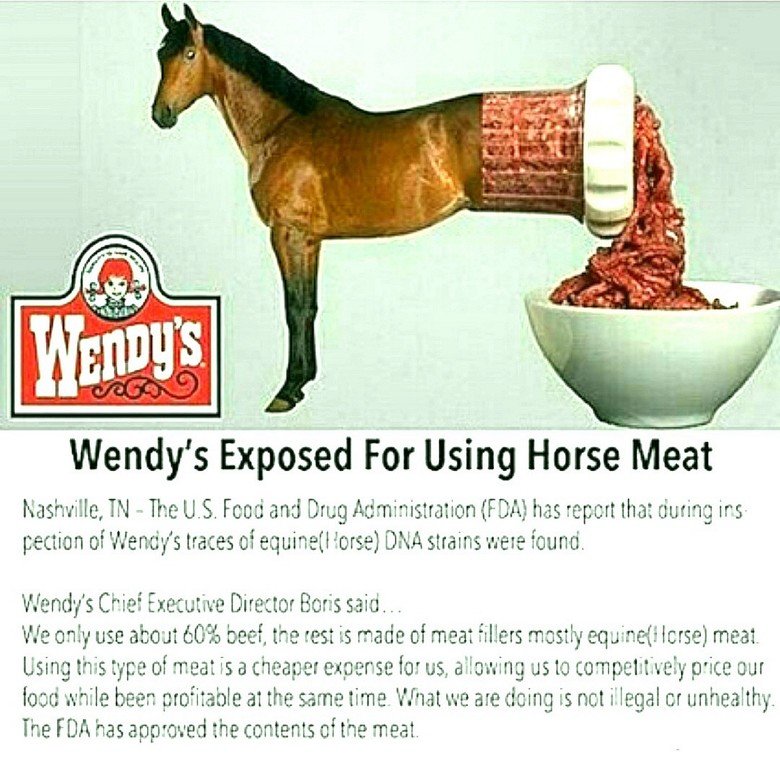
A mono-component product should be used as the first meat puree. Meat puree with the addition of dill and cumin is recommended for use from 6–7 months. Multicomponent meat purees, which include onion, garlic, legumes, celery, parsley, are used in the nutrition of children older than 8 months. After 9 months, spices (sweet and white pepper, bay leaf) can be included in the puree, after 10 months - basil, coriander, allspice.
Separately, I would like to dwell on the characteristics of canned meat for children with offal. Of course, the introduction of meat purees with offal into the diet allows the child to be provided with minerals such as copper and manganese, the content of which in these products is higher than in complementary meat products without including the liver, heart, and tongue. However, the high content of extractives, cholesterol, etc. in by-products indicates the need for a later appointment of this type of complementary foods in a limited amount.
Starch and (or) cereals can be used to give the puree a delicate texture. Also, butter or vegetable oil, iodized salt in minimal quantities can be added to canned food. Taking into account the age characteristics of the child's gastrointestinal tract, it is planned to produce canned food of various degrees of grinding: homogenized (for children 6–7 months old), pureed (for children 7–8 months old), coarsely ground (for children 9–12 months old) [7].
At present, not only foreign ones (Gerber, Heinz, Beech-Nat, Samper, HiPP, Kolinska, Nestle, Nutricia, etc.), but also domestic manufacturers have developed special canned meat for children (OJSC Progress (FrutoNyanya), First Baby Food Plant, MK Tikhoretsky (Tyoma), OJSC Wimm-Bill-Dann Foods (Agusha), LLC Sivma (Babushkino lukoshko), etc.). A large assortment of commercially produced meat complementary foods, currently on the Russian market, allows you to individualize nutrition, taking into account the age of the child and his state of health. For example, in the case of a aggravated allergic history, it is recommended to use canned meat for children made from hypoallergenic meats - pork, turkey, horse meat, etc. In this case, the presence of various shaping agents in the product - corn, rice starch, etc., should be taken into account, since their presence can induce the development of an allergic reaction. Therefore, the content of these thickeners in the product should be kept to a minimum.
For example, in the case of a aggravated allergic history, it is recommended to use canned meat for children made from hypoallergenic meats - pork, turkey, horse meat, etc. In this case, the presence of various shaping agents in the product - corn, rice starch, etc., should be taken into account, since their presence can induce the development of an allergic reaction. Therefore, the content of these thickeners in the product should be kept to a minimum.
So, for example, children suffering from food allergies can be recommended children's canned meat domestic production FrutoNyanya, made from pork, turkey, rabbit, lamb. These products are made with a minimum amount of shapers (no more than 2% corn starch), without the addition of broth, salt, spices, soy protein, bone meal. As for nutritional value, the protein content in these products is at least 14–16 g per 100 grams of the product.
Quite new products for the Russian market are ready-made complementary foods - children's soups (dry instant and homogenized canned food) on vegetable and vegetable-meat. These products have a liquid consistency and are diluted with water during cooking. Children's soups can be used both as complementary foods in children of the first year of life, and in the nutrition of older babies. An example of such products can be children's soups produced by Heinz.
These products have a liquid consistency and are diluted with water during cooking. Children's soups can be used both as complementary foods in children of the first year of life, and in the nutrition of older babies. An example of such products can be children's soups produced by Heinz.
Thus, the modern assortment of industrial canned meat for children is characterized by an optimal composition, which makes it possible to provide the child's body with such important components as protein, iron, zinc, etc. In addition, a wide selection of these products allows an individual choice of a product based on the characteristics of the condition child's health.
Literature
-
Domellof M., Cohen R. J., Dewey K. G. et al. Iron supplementation of breast-fed Honduran and Swedish infants from 4 to 9months of age // J Pediatr. 2001; 138:679–687.
-
American Academy of Pediatrics. Committee on Nutrition.
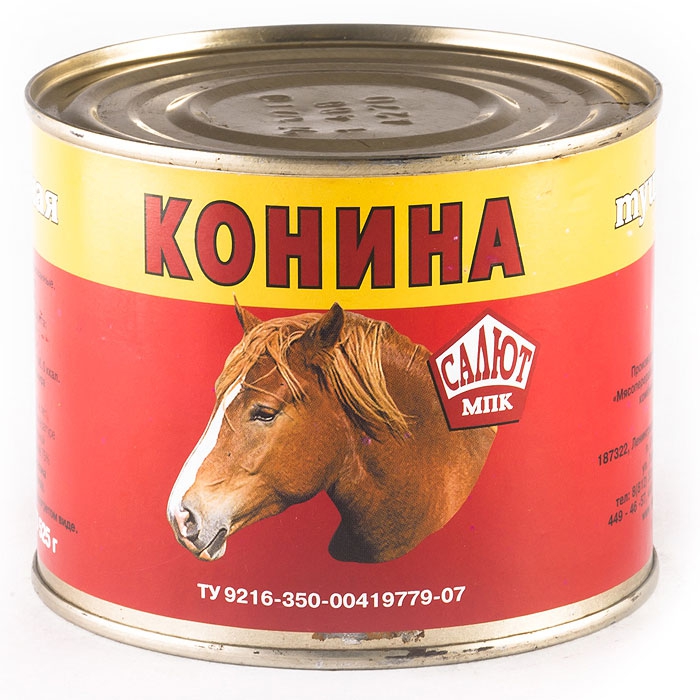

 Of course, many mothers – and even a few fathers – in the Boot cook baby's food for them. When they do, the baby generally gets fed whatever the rest of the family is eating. It just gets pureed in the blender first.
Of course, many mothers – and even a few fathers – in the Boot cook baby's food for them. When they do, the baby generally gets fed whatever the rest of the family is eating. It just gets pureed in the blender first.  The mild version for babies comes in a packet of powder that goes into a bottle with warm water and usually is given in addition to mamma's breast milk. The idea is that this drink relaxes baby and keeps the tantrums at bay.
The mild version for babies comes in a packet of powder that goes into a bottle with warm water and usually is given in addition to mamma's breast milk. The idea is that this drink relaxes baby and keeps the tantrums at bay.  And I don't want to know the truth if it isn't because I can't get enough of it.
And I don't want to know the truth if it isn't because I can't get enough of it.  Generally, you make a broth of chicken stock, carrots, and celery, boil the pastina in it, and then add one of the jars or your own pureed meat and/or vegetable. You always add a dollop of that olive oil for enhanced flavor. For variety, some nights, you add formaggino (a very soft, mild cheese) to plain pastina instead of the other stuff. Formaggino is something I've learned every Italian relates to his childhood.
Generally, you make a broth of chicken stock, carrots, and celery, boil the pastina in it, and then add one of the jars or your own pureed meat and/or vegetable. You always add a dollop of that olive oil for enhanced flavor. For variety, some nights, you add formaggino (a very soft, mild cheese) to plain pastina instead of the other stuff. Formaggino is something I've learned every Italian relates to his childhood.  People photograph it, and it's a bit of an adorable mess with egg on baby's face.
People photograph it, and it's a bit of an adorable mess with egg on baby's face.  The family is a big part of feeding baby. Everyone – from zii to nonni – get in on the act. It's part of the joy and the buon appetito.
The family is a big part of feeding baby. Everyone – from zii to nonni – get in on the act. It's part of the joy and the buon appetito.  Fat deposits are found in areas in the region of the crest of the neck, withers, sacrum and on the hips. On the inner side of the abdominal wall, near the white line, fat is located in a continuous watering
Fat deposits are found in areas in the region of the crest of the neck, withers, sacrum and on the hips. On the inner side of the abdominal wall, near the white line, fat is located in a continuous watering 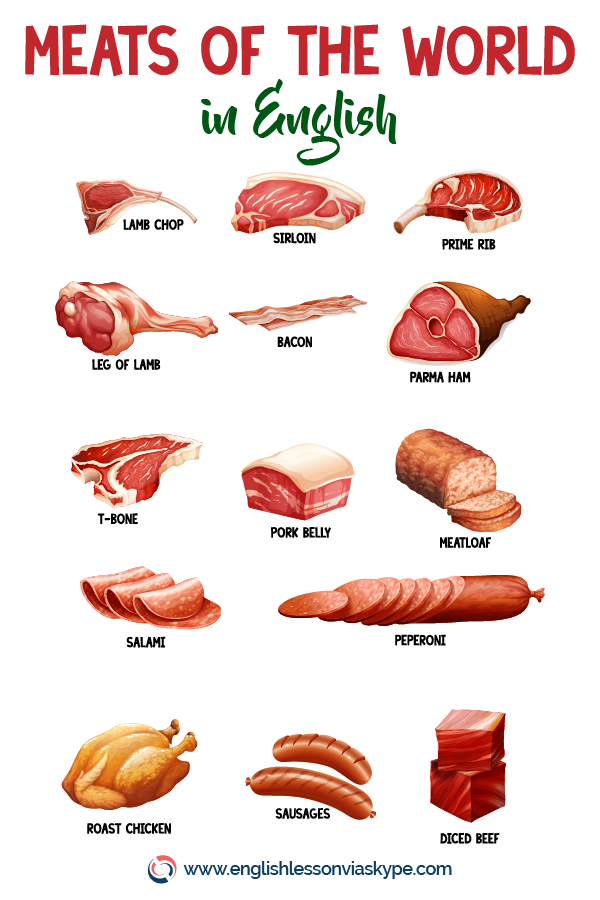 Approved by the Ministry of Agriculture of the Russian Federation on December 18, 2000
Approved by the Ministry of Agriculture of the Russian Federation on December 18, 2000  It should be read: Decision of the Commission of the Customs Union of August 16, 2011 N 769. - Note of the database manufacturer.
It should be read: Decision of the Commission of the Customs Union of August 16, 2011 N 769. - Note of the database manufacturer.  1.986-2000
1.986-2000 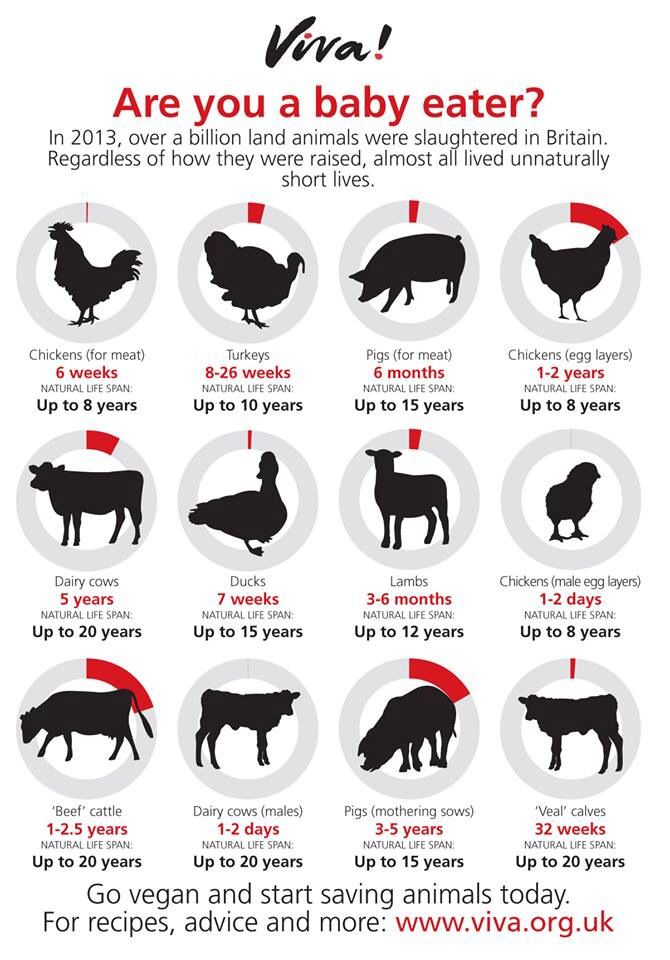 A.M. Klisenko. M., 1992
A.M. Klisenko. M., 1992 

